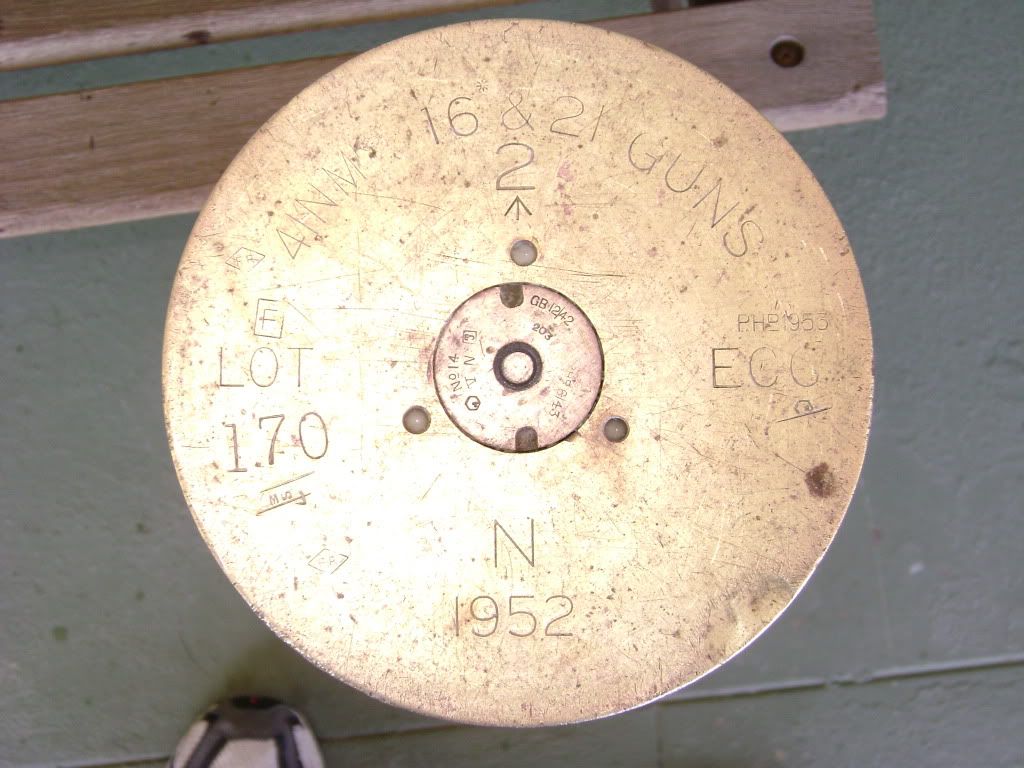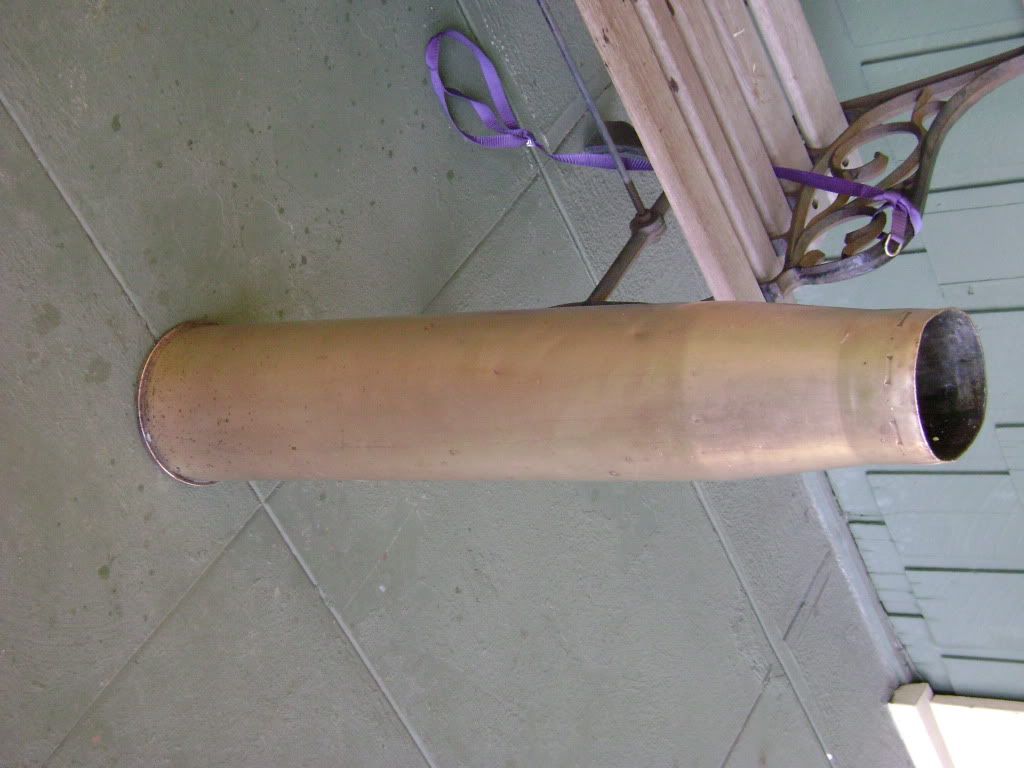The overall shape is the same as the US 105mm tank main gun round. However, without a scale, all I can say is the shape is the same, not the size.
You should have the mouth of the case measured, that will narrow it down a lot. The approximate size in mm or inches, along with the markings will help.
The bottleneck shape indicates a high velocity round, the kind used for tank and anti-tank cannons. Generally, artillery uses straight cases, but there are exceptions.
And, while I'm far from expert, it is also remotely possible that the shell in question could be a naval shell. Coming out of Africa, nearly any possible combination of historical circumstances is not beyond reason. All kinds of pre and post WW II guns and military equipment are still in use in Africa, from all nations.
My best guess (and totally without any basis) maybe a round from a Centurion tank. Originally introduced at the very end of WWII with an 85mm main gun, and later marks armed with a 105mm gun, the Centurion served in British & Commonwealth forces through the 1970s. Quite possible some of those wound up in Africa, or some other vehicle/ground mount using the same gun.
I don't have the resources for a better ID, sorry, but its easily possible someone else on the forum does, and will be along eventually.





